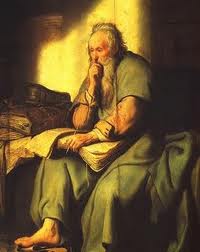Question
Dear Gramps,
I would like to know who changed the scriptures to read God in the singular, instead of Elohim, the gods, in the plural in our first five books of our present Bible. Also, why the every first sentence in the Bible, “In the beginning there were six”, has been removed? This is an extremely important passage since in was on six tablets that the creation story was written, in both Assyria and Babylonia. Also, in sacred geometry the six petaled flower emblem that represents the six stages of creation is called the Genesis. And the six directions of consciousness that God needed to create, to make something out of nothing are all represented in that little sentence.
Linda
Answer
Dear Linda,
In “changing the scriptures” you are talking about translating the scriptures from Hebrew to English. The Hebrew scriptures used the plural word for God, but those who translated them into English used the word, God. It was as simple as that. When anyone translates (or copied, as they did before automatic reproduction of the written word) they do so in terms of their own understanding.The reformers who translated the Bible into English used the singular form because that corresponded with their belief.
If one compares the twenty Book of Mormon Isaiah Chapters with the King James version, one finds a total of 348 changes. Of these, 233 are merely stylistic, i.e., they do not change the meaning of the passage. The other 115 changes, however, are substantive, i.e., they actually change the meaning of the information presented. In the Book of Mormon version, Nephi copies the hand writing of Isaiah from the Brass Plates of Laban into his own record, the Small Plates. These plates, that comprise the first six books of the Book of Mormon, (along with the rest of the book) were translated into English by the prophet, Joseph Smith, by the gift and power of God. Therefore, the Book of Mormon Isaiah is the true and correct rendition of those chapters, and any differences between them and any other version represent changes made by those who copied and translated Isaiah in the Bible forms that we have today.. These changes are by no means random scribal errors. They were changed, if you will, by malice aforethought, to correspond with the apostate beliefs of those who made copies of the Bible. For just a few brief examples:
1Nephi 20:2/Isaiah 48:2– An accusation is changed to a commendation.
1 Nephi 20:15-16/Isaiah 48:1516– Rather shrewd changes propagate the justification for Israel’s apostate behavior.
1 Nephi 20:22/Isaiah 48:22–Israel’s guilt is removed in the King James version be removing a connecting phrase from the passage. etc. etc.
I don’t know where you find “In the beginning there were six” in the first verse of the Bible. I don’t find that phrase in either the Masoretic Hebrew or in the Greek Septuagint.
Also, attaching some esoteric significance to a six petaled flower and assuming some six directioned conscienceness of God, is a rather superficial and extremely limiting interpretation of the conscience of God. If you would like to find some numerical relation to God’s creations you might investigate the Fibonacci series of numbers. This series is formed by stating with the numbers 0 and 1, representing nothingness and completeness. The series is developed by adding the last two numbers together to form the next number, as 0 1 1 2 3 5 8 13 21 34 55, etc. To see the details of how this series corresponds to multitudinous applications in nature, go to your internet explorer and enter “Fibonacci” into the Google search engine and click on the title, “Fibonacci Numbers, the Golden section and the Golden String.” When that comes up, scroll down to Fibonacci Numbers and Nature. I think that you will be amazed at the correspondence of the numbers in this series with the creations of God.
Gramps







